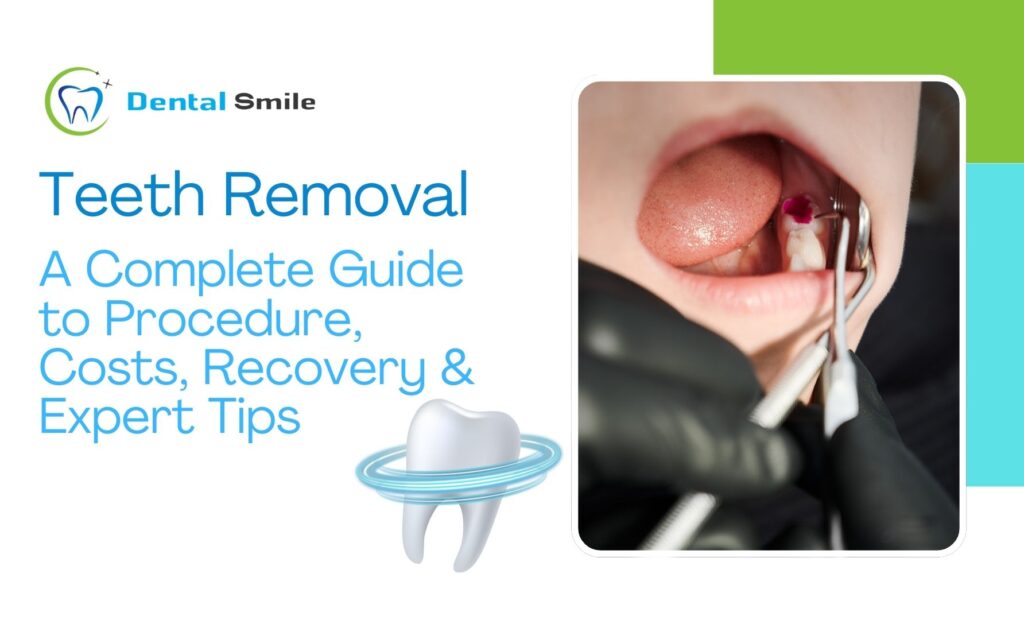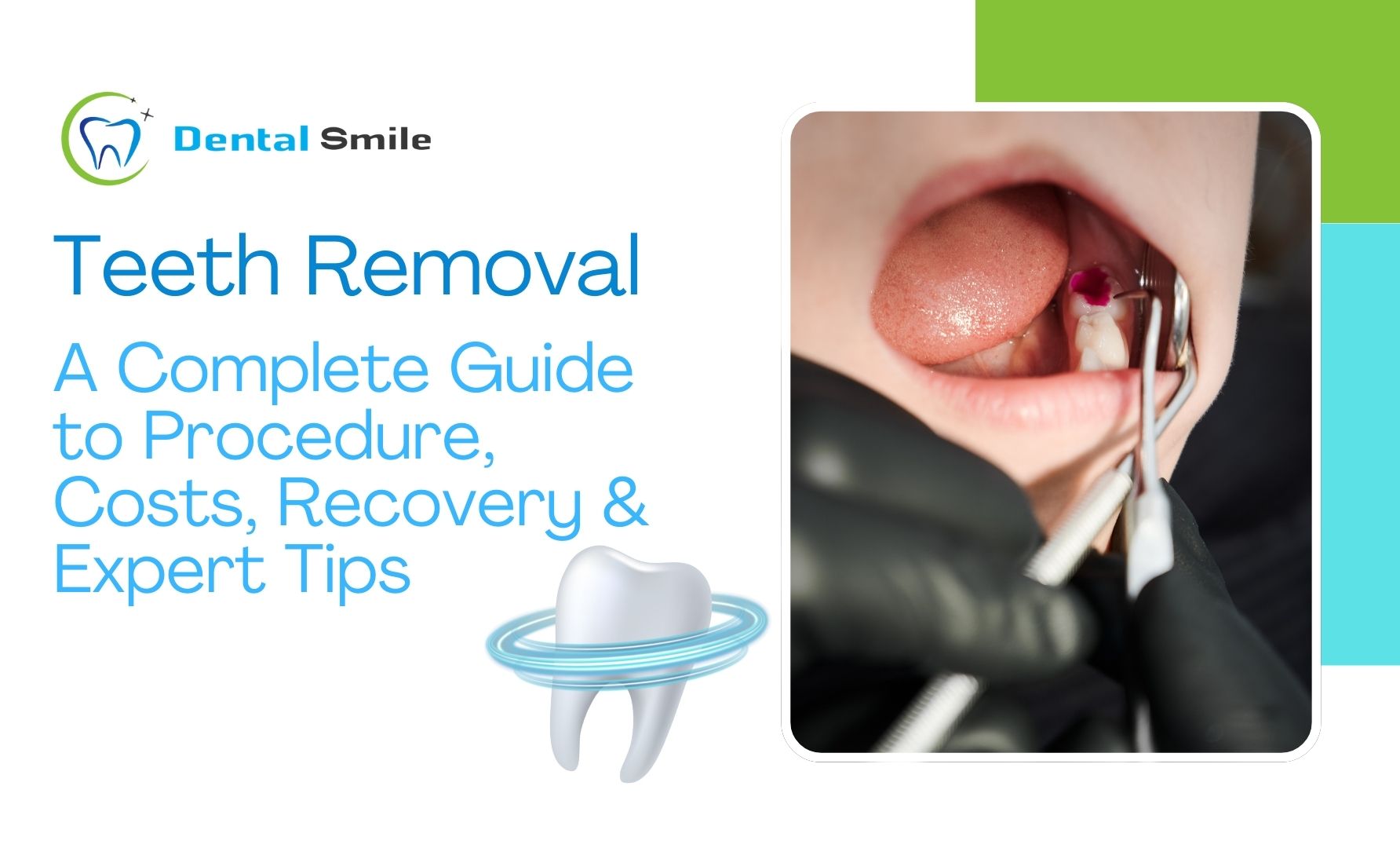What Is Teeth Removal?
If you’ve been dealing with persistent tooth pain or your dentist has recommended Teeth Removal, you’re definitely not alone. Tooth extraction is one of the most common dental procedures worldwide, and modern techniques make it far more comfortable than people expect. Whether it’s a wisdom tooth that’s making your life miserable or a severely decayed tooth causing issues, removal can protect your oral health and prevent bigger problems down the line.
Teeth removal (also known as dental extraction) is the process of taking out a problematic tooth from its socket. Dentists recommend this only when a tooth can’t be restored or is causing complications.

When Do You Actually Need a Tooth Extracted?
There are several reasons a dentist may advise removing a tooth:
1. Severe Tooth Decay
When decay reaches the inner pulp and root canal treatment isn’t suitable.
2. Impacted Wisdom Teeth
Wisdom teeth often grow sideways or partially emerge, causing pain and infections.
3. Gum Disease
Advanced periodontal disease can loosen teeth to a point where extraction is necessary.
4. Overcrowding
For orthodontic treatments, sometimes a tooth must be removed to create room.
5. Fractured or Broken Teeth
If the fracture extends below the gum line, extraction may be the only option.
Types of Teeth Removal Procedures
Simple Tooth Extraction
Used when the tooth is visible and can easily be loosened and removed with dental instruments.
Surgical Tooth Extraction
This is needed when:
- The tooth is impacted
- The tooth has broken at the gumline
- Bone needs to be removed
- Stitches are required afterward
Surgical extractions are common for wisdom teeth and complicated cases.
What Happens During a Teeth Removal Appointment?
Here’s a friendly walk-through so nothing feels intimidating:
1. Consultation & X-rays
Your dentist examines the tooth and takes X-rays to study the position, shape, and surrounding bone.
2. Local Anaesthesia
A numbing agent ensures you feel no pain only mild pressure.
3. Extraction
For a simple extraction, the dentist loosens the tooth and removes it.
For a surgical extraction, a small incision may be made in the gum.
4. Stitches (If Required)
These help with healing.
5. Recovery Instructions
Your dentist will give you personalised aftercare advice.

How Much Does Teeth Removal Cost?
Exact pricing varies, but here’s a general breakdown:
- Simple extraction: Typically lower cost
- Surgical extraction: Higher due to complexity
- Wisdom teeth removal: Can vary based on impaction
External authority sources (like ADA or local dental associations) often state that costs depend on X-rays, complexity, and sedation options.
Recovery Timeline: What to Expect
Most people heal quickly, but here’s a typical timeline:
First 24 Hours
- Blood clot forms
- Mild swelling
- Some pain or discomfort
Day 2–3
- Swelling peaks then begins to reduce
- Soreness improves
Day 4–7
- Most normal activities can resume
- Soft foods may still be preferred
Week 2
- Gum should be fully healed
- Stitches (if non-dissolvable) are removed
Do’s & Don’ts After Teeth Removal
Do:
Apply ice packs
Stick to soft foods
Keep your mouth clean but gentle
Take prescribed pain medication
Rest and avoid strenuous activities
Don’ts:
Don’t drink through straws (risk of dry socket)
Don’t smoke for at least 48–72 hours
Don’t eat crunchy, spicy, or hard foods initially
Don’t touch the extraction site with your tongue or fingers
Risks & Complications
Teeth removal is generally safe, but like all medical procedures, there are risks:
- Dry socket
- Infection
- Prolonged bleeding
- Swelling or bruising
- Nerve sensitivity (for lower wisdom teeth)
Your dentist will discuss these before the procedure.
How to Prepare for Your Appointment
A few tips to help you feel confident:
- Share your medical history (especially medications or health concerns)
- Ask if fasting is needed (for sedation cases)
- Arrange someone to drive you home if sedation is used
- Wear comfortable clothing
- Have soft foods ready at home: soups, smoothies, mashed potatoes
Conclusion: Why Professional Teeth Removal Matters
If you’re dealing with pain, swelling, or persistent dental issues, Teeth Removal can be a safe and effective solution to restore your oral health. Modern dental techniques make the process quick, comfortable, and predictable. The key is choosing an experienced dental team that guides you from pre-care to full recovery.
For expert dental care and safe extractions, consider booking a consultation today.
FAQs
Thanks to anaesthesia, Teeth Removal typically involves minimal discomfort. You may feel pressure, but not pain. After the procedure, mild soreness is normal.
Thanks to anaesthesia, Teeth Removal typically involves minimal discomfort. You may feel pressure, but not pain. After the procedure, mild soreness is normal.
Stick to soft foods like yogurt, soups, mashed fruits, and smoothies. Avoid hot foods for the first 24 hours.
Yes but very gently. Avoid brushing the extraction site for the first 24 hours.
Most people return to work in 1–2 days unless sedation or surgical extraction was involved.

